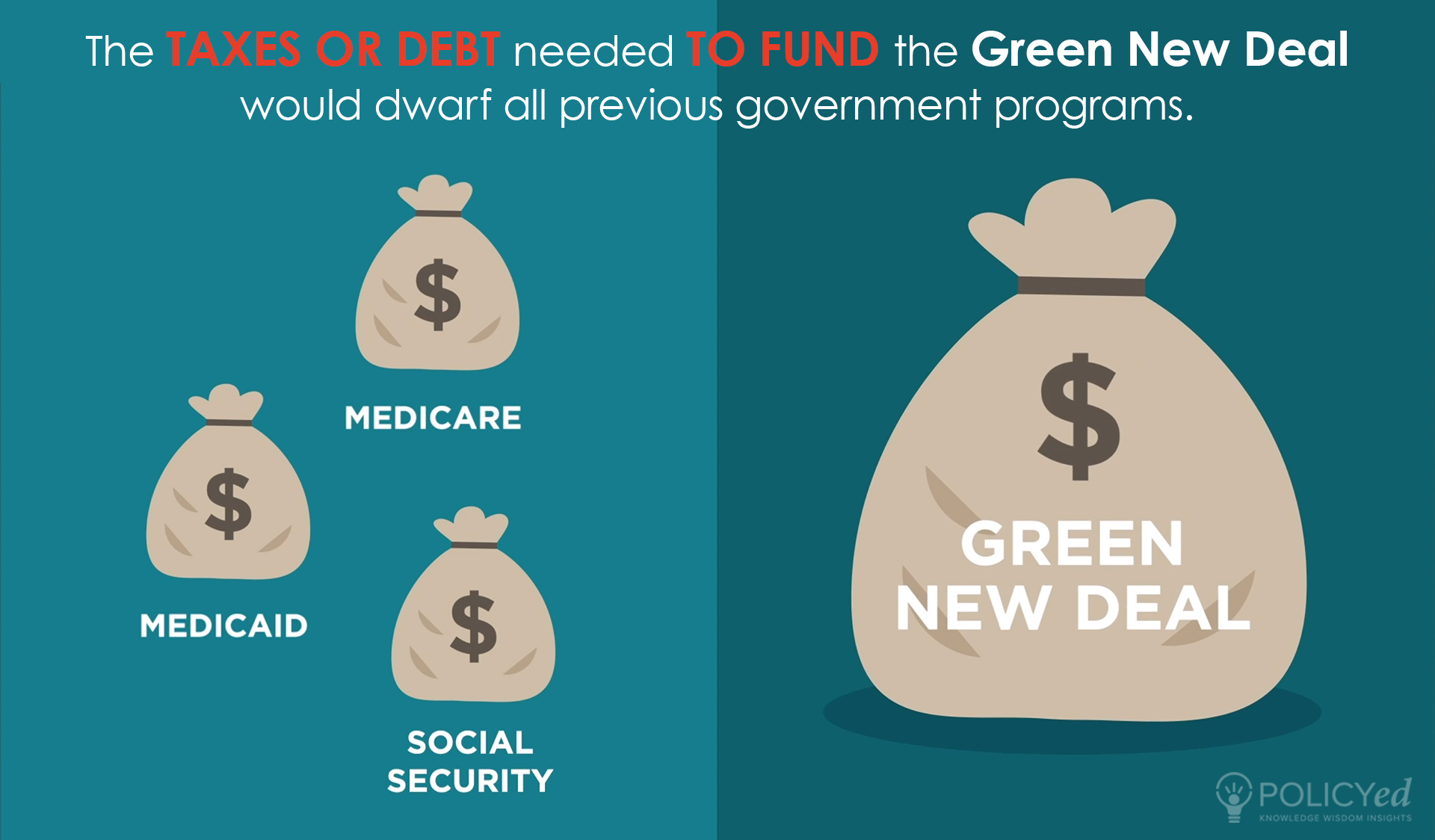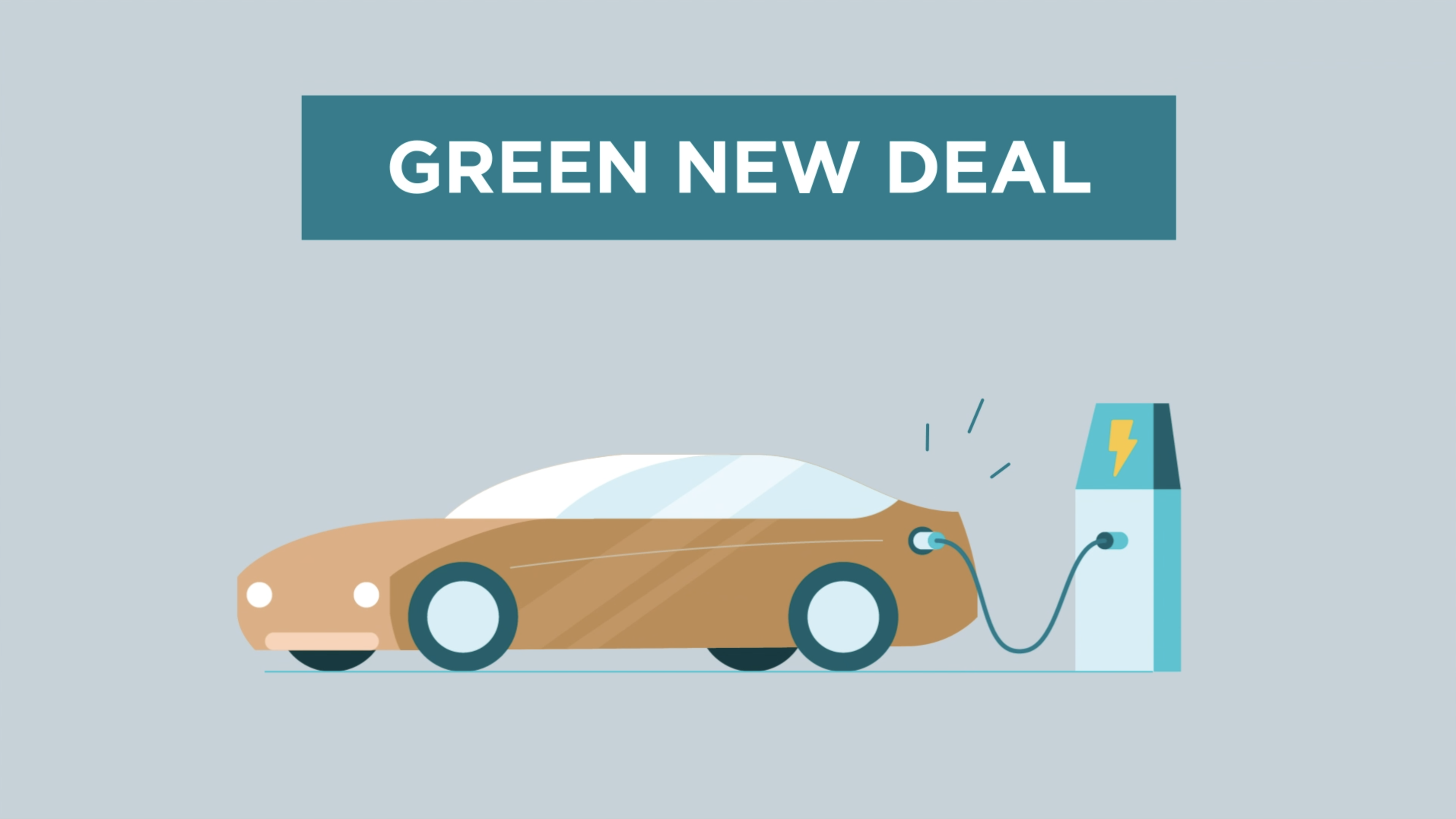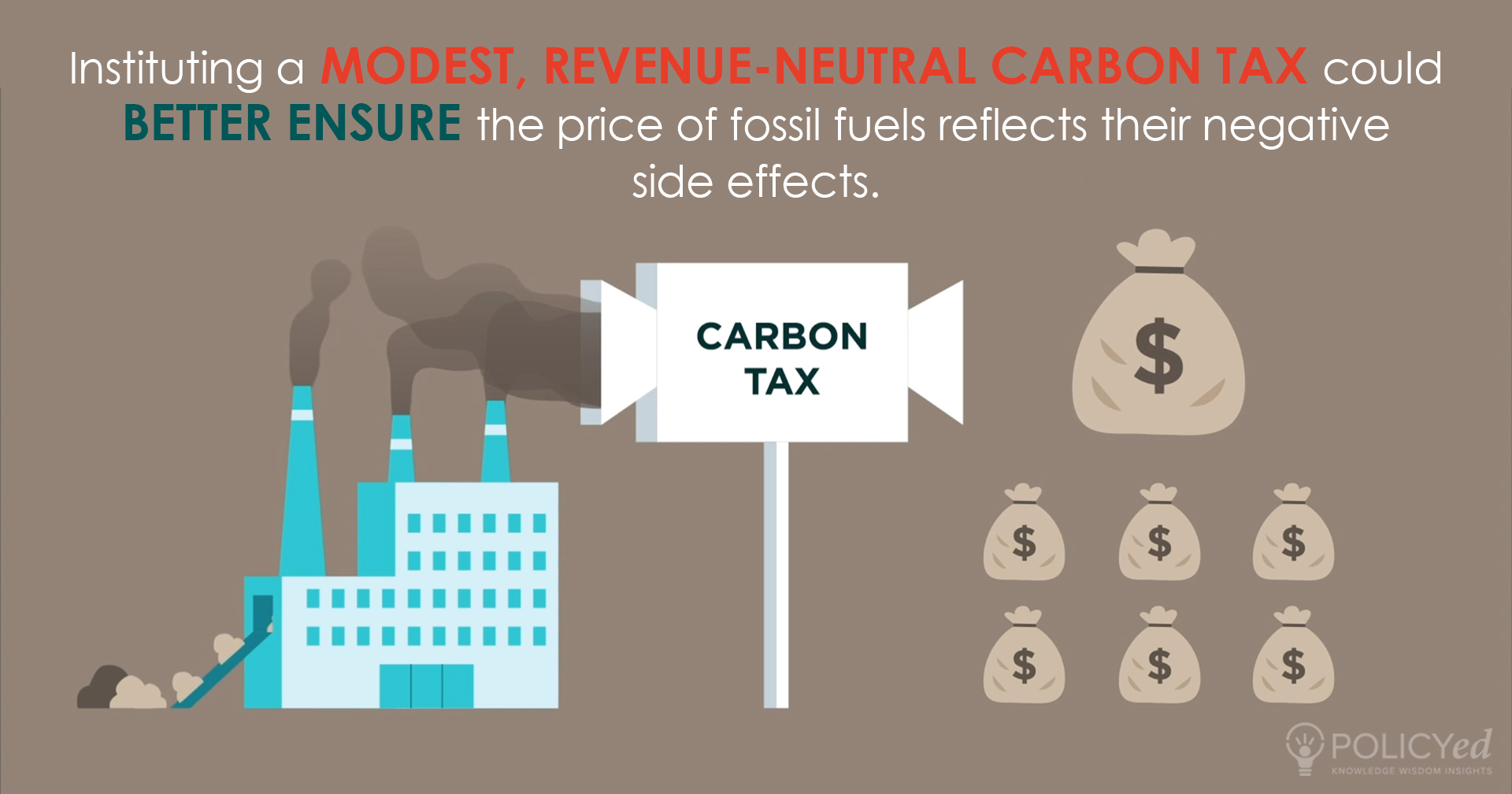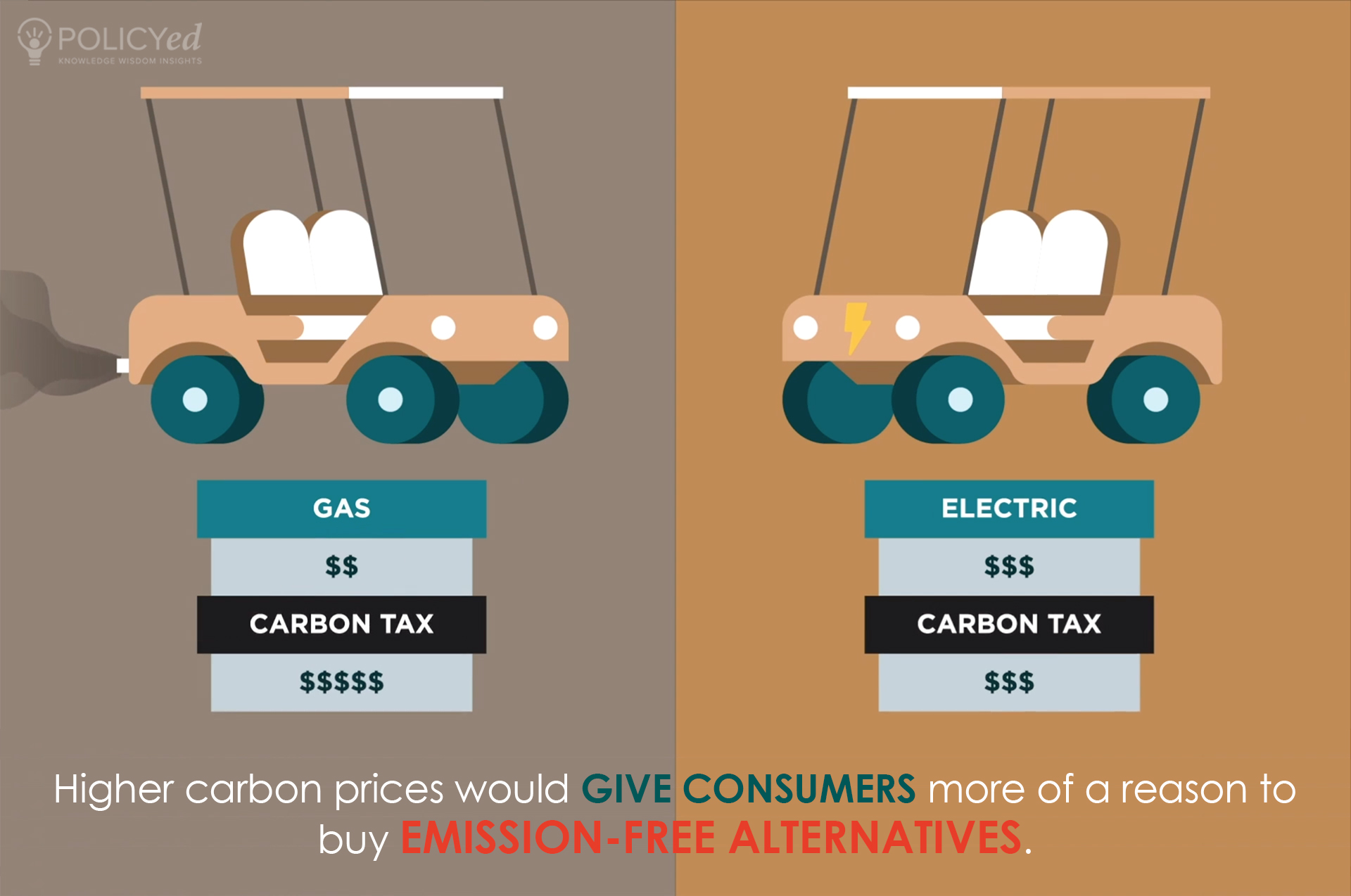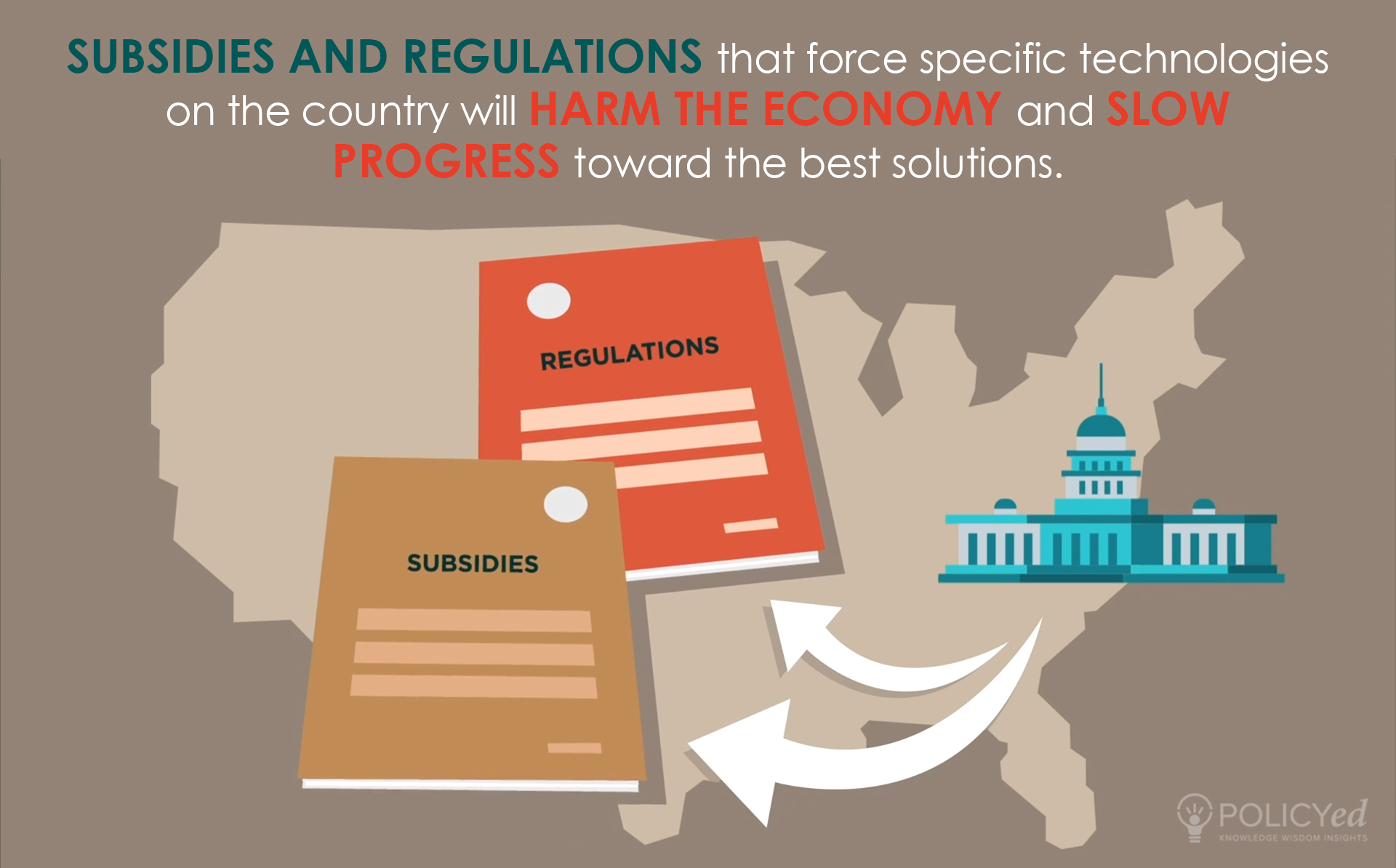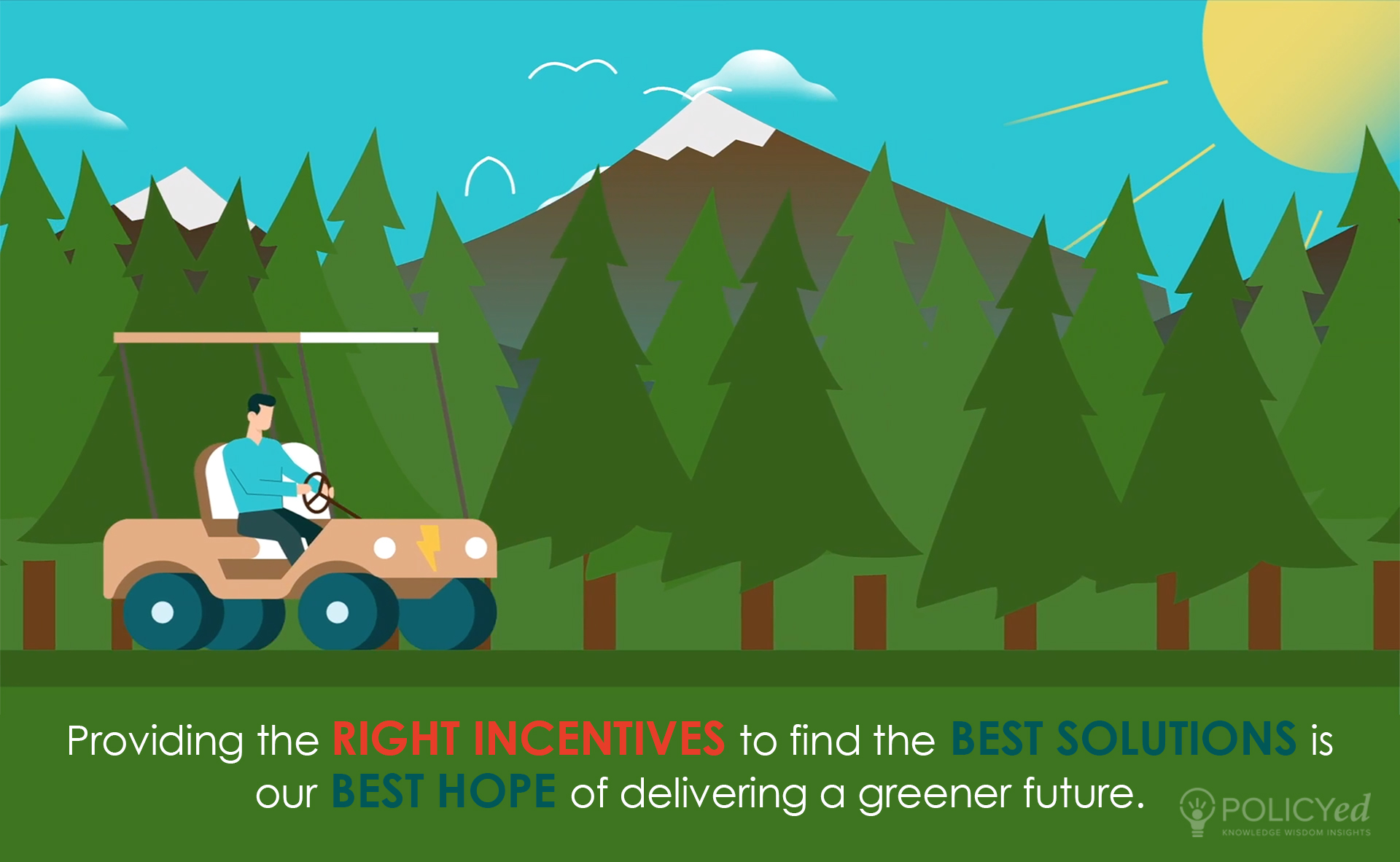Key Facts
Effectively Reducing Greenhouse Gas Emissions
Proponents of the Green New Deal often fail to consider other available options that would make progress toward their goal of reducing or eliminating carbon emissions. Cost-benefit analyses can help inform reformers about the most effective ways to reduce greenhouse gas emissions.
Higher-Carbon Energy Prices
Instituting a carbon tax would make low-carbon-emitting goods or services less expensive relative to their high-carbon-emitting counterparts. In this way, a carbon tax would encourage consumers to shift to a low-carbon footprint without mandating new rules or regulations regarding the production of goods and services.
Encouraging the Best Solutions
Allowing politicians to pick technological winners and losers is a risky method of identifying the best method to reduce carbon emissions. If they pick wrong and then regulate the other options out of existence, then we are left with a suboptimal arrangement. Instituting a carbon tax uses the price mechanism to identify the most cost-effective way to achieve that same goal.
Getting the Incentives Right
Providing the right incentives to achieve the goal of a greener, low-carbon future means being dedicated to whatever methods work, even if they end up being politically unpopular. At the end of the day, identifying the best solution will mean more to our future than winning political points in the polls.

